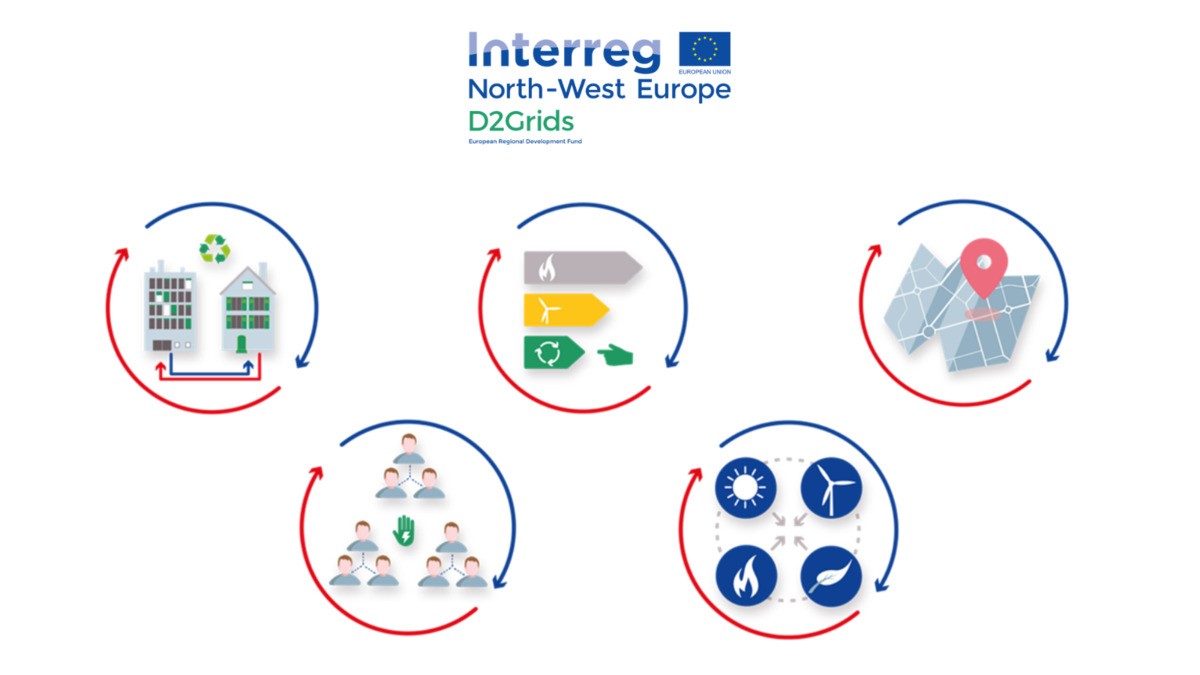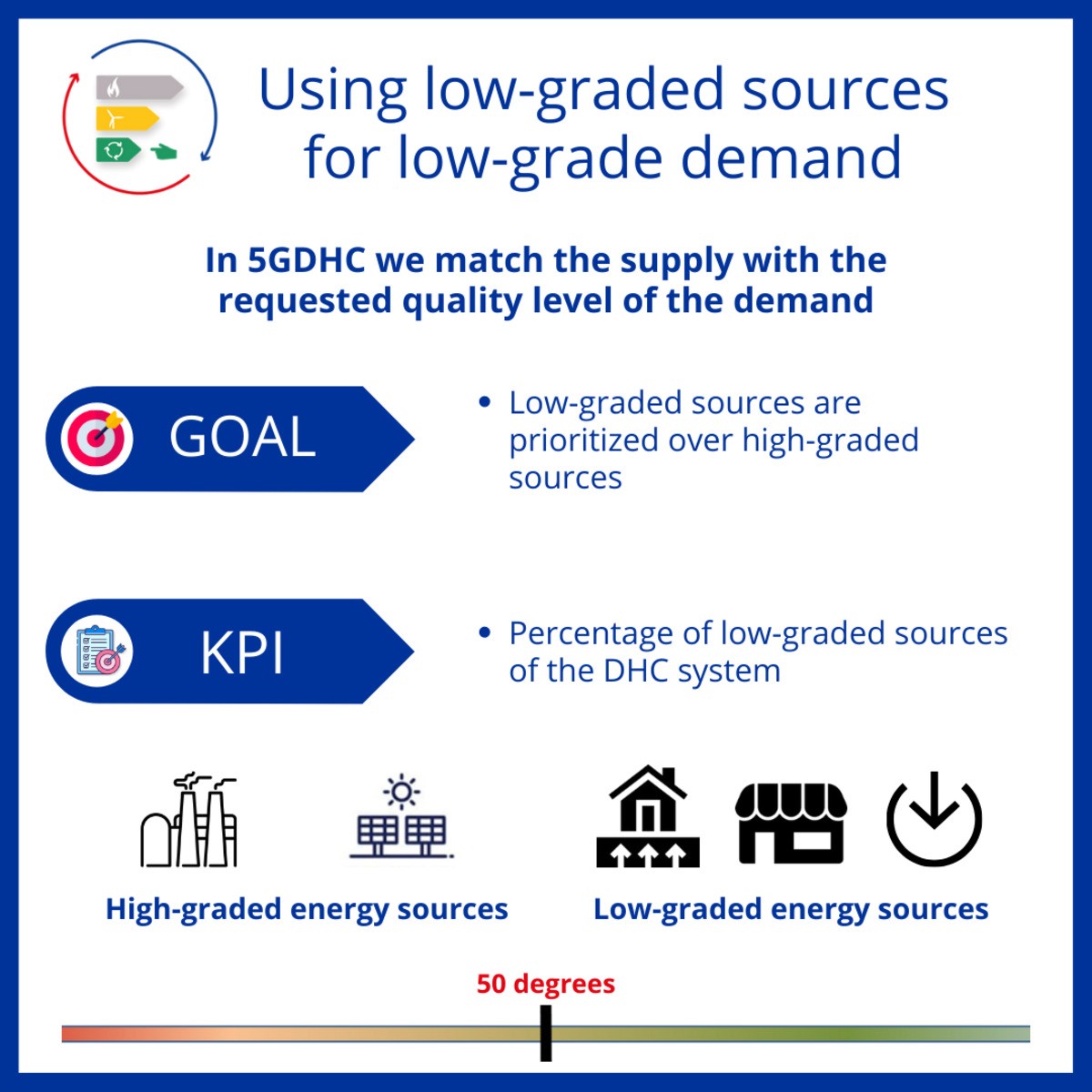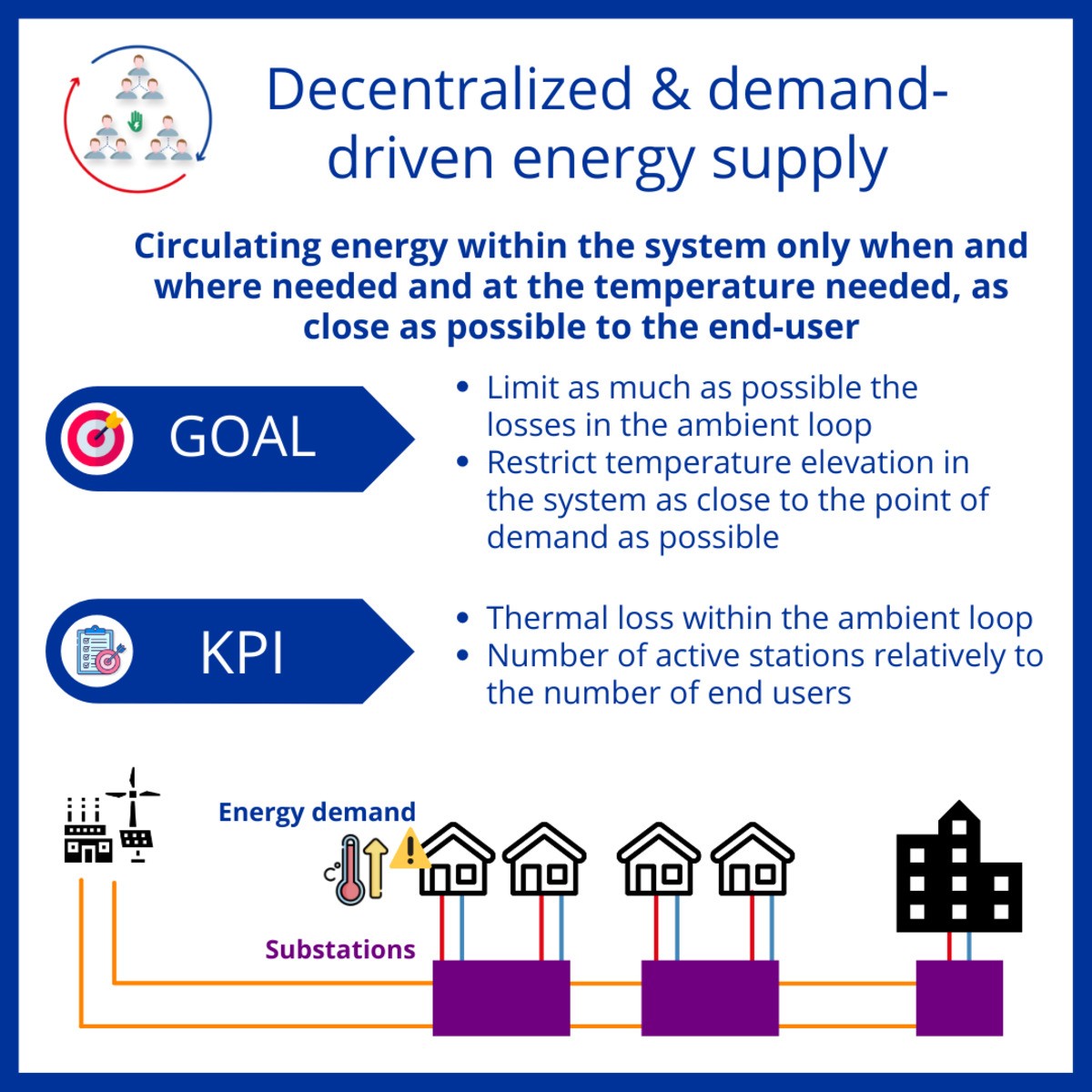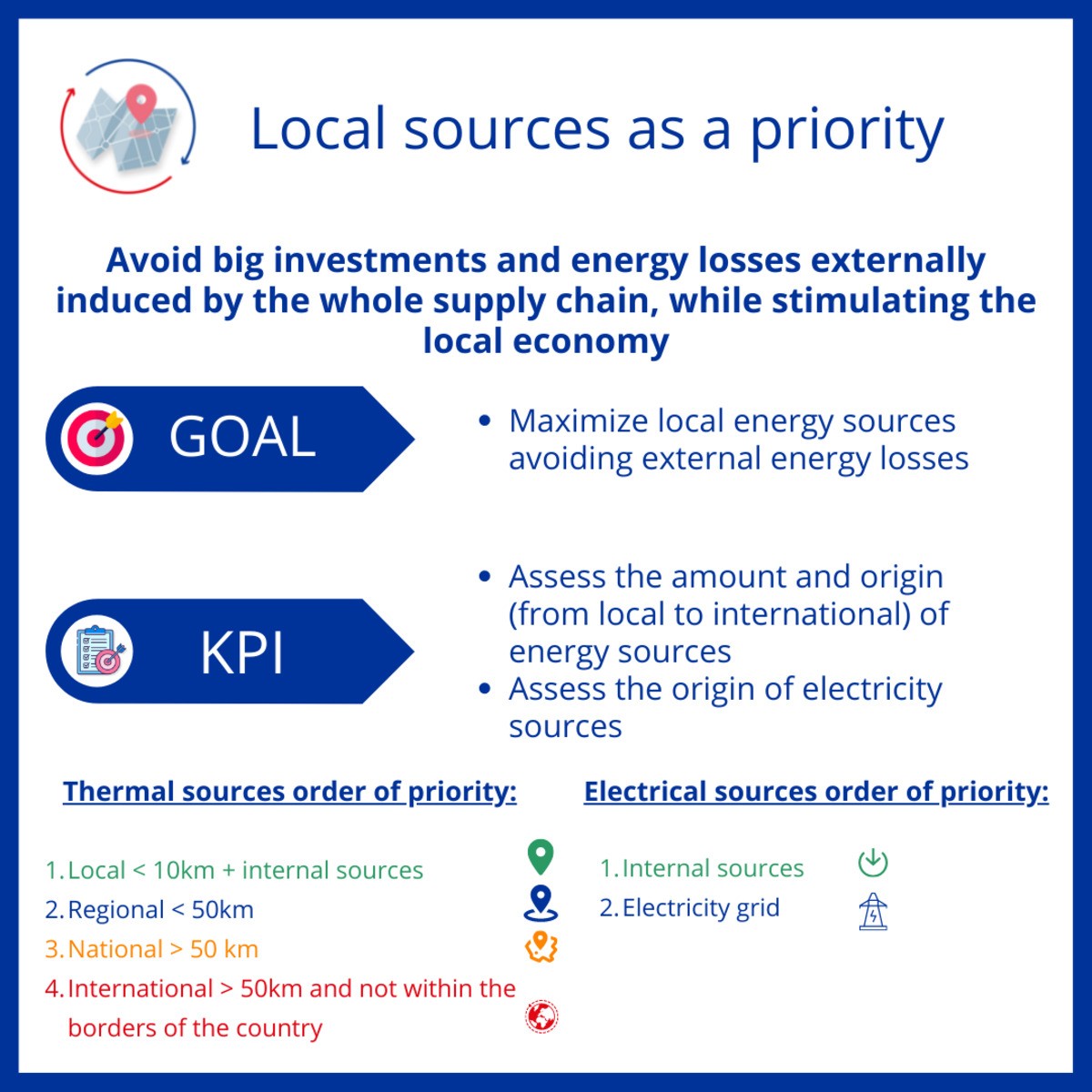5GDHC grids: 5 key performance indicators to evaluate the performance of your system
D2Grids Project

In September 21, partners of the European project D2GRIDS gathered for a three-day sprint session. The objective? Determine a set of key performance indicators (KPIs) to quantify the core principles of 5GDHC. These KPIs will help get a better understanding of how current energy networks perform. In this article, you will discover how the 5 principles of 5th generation district heating and cooling can be assessed with concrete indicators.
The goal: setting a benchmark of 5GDHC grids
To define a benchmark, data from several DHC grids will be needed to see how they score on the KPIs defined within D2Grids. This will help set an ambitious, yet reasonable benchmark.
Are you working on a DHC grid that could be assessed by those KPIs? Discover how you can send us your data at the end of this article!
The Key Performance Indicators
The principles with their corresponding KPIs are:
1. Closing the energy loop
The first principle is about the self-sufficiency of the energy system due to the use of internal (sustainable) sources and optimising exchange (of heat and cold) between the customer buildings. An ideal 5GDHC system works in a closed loop, in other words, energy should come exclusively from sources within the system boundaries. One of the challenges here is that the loop has to operate all year round, therefore energy storage also plays an important role.
For this principle, two KPI’s have been developed, one that identifies the percentage of exchanged energy between the customer buildings and another KPI that indicates the share of energy supplied from internal sources. When a 5GDHC grid is fully self-sufficient, this last indicator reaches 100%. When geothermal sources are used, only the amount of energy that can be produced without lowering the year-average temperature of the source, can be considered as an internal source. This is especially of interest when working with deep-geothermal sources.
2. Using Low-graded sources for Low-grade demand.
The second principle is all about the quality of the energy sources. The temperature of a 5GDHC network should be close to ambient/soil temperature, to match the low-graded (low exergy) demand. Low-graded energy is within D2Grids defined as energy with a temperature between 10°C and 50°C. Furthermore, the energy should be retrieved from renewable energy sources. Waste heat is also considered as renewable energy in our research, as it is reused energy, which would otherwise be blown into the air.

3. Decentralised & demand-driven energy supply
This principle emphasizes the importance of the efficiency of an energy system. Thermal energy should circulate in the system with a minimum travel distance to avoid losses and be as efficient as possible. Ideally, all the users of the network are prosumers, so the energy supply is decentralized. In order to quantify this principle, the energy losses of the system will be calculated. A second KPI measures the amount of active substations (a station where the temperature level is altered actively) with respect to the amount of end users connected to the system.

4. An integrated approach of energy flows
The fourth principle is about the (inter)connection of other energy flows (e.g. power grid, hydrogen conversion, solar plants, etc.) to the DHC. It aims to avoid energy waste across sectors and reduce peak loads. This KPI determines the minimum energy load needed for the grid to be operational. This virtual minimum load is compared to the designed (design phase) or installed (operation phase) capacity of the system. This will determine an indication of the oversizing of the installation.
5. Local sources as a priority
The last principle is about how local minded the system is. Being more local minded results in avoiding energy losses during transport, stimulating the local economy, and even potentially creating local work opportunities. This KPI scores how local a system is performing for thermal as well as electrical sources. The KPI for thermal sources is determined using a categorisation on 4 levels: municipality (< 10 km + internal sources), regional (< 50 km), national and international. The electricity supplied to the DHC is categorised on two levels : self-produced electricity within the system or electricity coming from the grid.

Setting the 5GDHC benchmark
The set of KPIs has been tested on the five pilot sites of the D2Grids project. This showed some interesting results to start setting it thanks to the data collected, but since some of these pilot sites are still not fully operating as planned, they don’t score to their potential. For example, almost all the pilots need all their electrical energy from the national grid, but with the 2nd Interreg NWE capitalisation call and the extension of the project, in (near) future planned, solar panels projects will change things.
Help us and share your data!
The final goal of these KPIs is to set a benchmark for 5GDHC, but to do so, more data is needed from other energy systems to see how they score on our KPIs and why. In this way, we can set an ambitious yet reasonable benchmark.
If you know a potential energy system or work in a company that works with or possesses a heating and cooling network, please contact us.
We are not only interested in 5GDHC, but in all sorts of energy networks, so we can test the KPIs on as many systems as possible. For the heating and cooling grid, it could be a possibility to compare itself with other networks and see where it potentially could improve.
If you are interested or have any questions, tips, or ideas, do not hesitate to get in contact, with us.
Contact info:
Jibbe Bertholet
[email protected]
contact[a]5GDHC.eu




